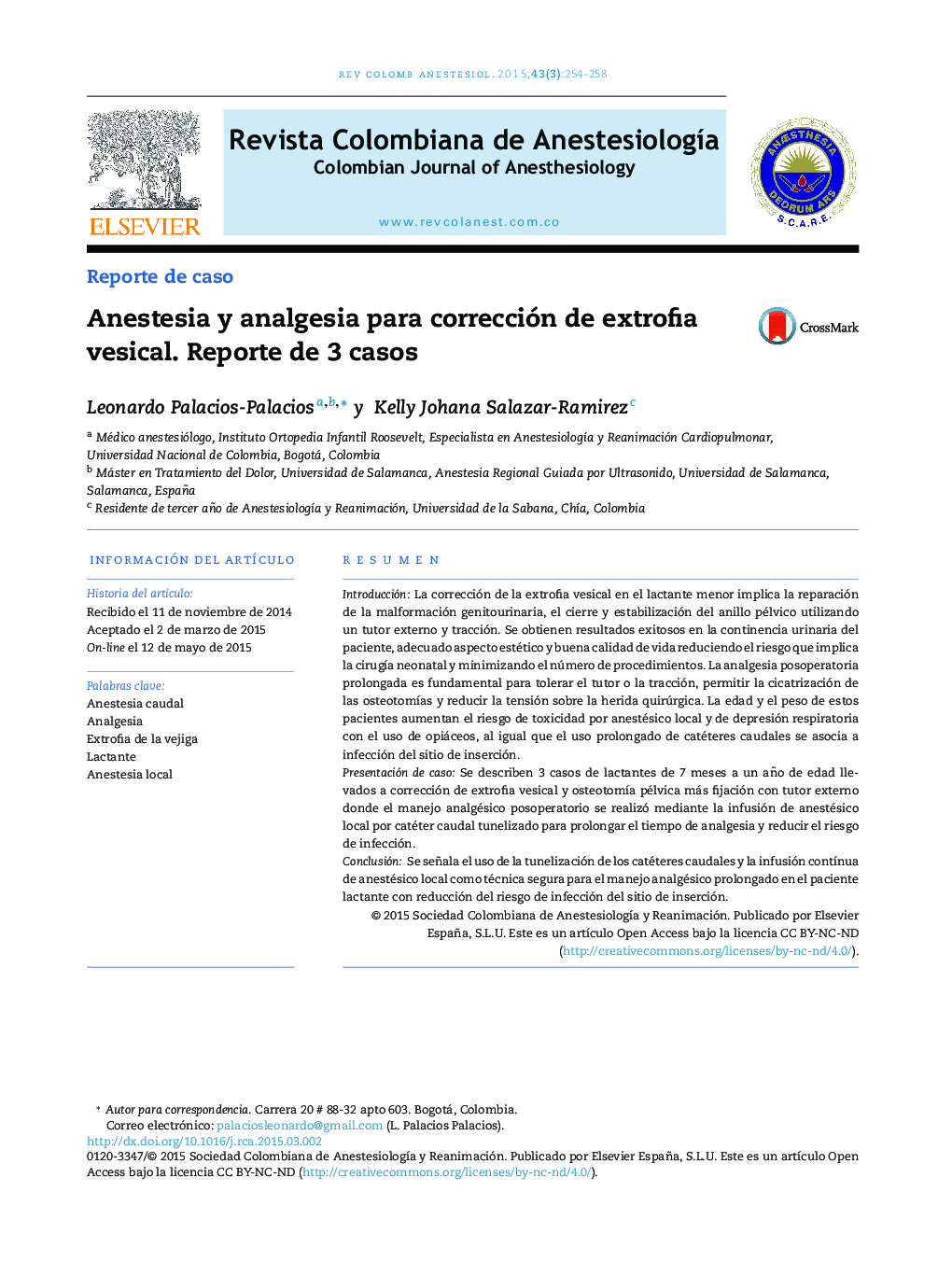| Article ID | Journal | Published Year | Pages | File Type |
|---|---|---|---|---|
| 2767802 | Revista Colombiana de Anestesiología | 2015 | 5 Pages |
ResumenIntroducciónLa corrección de la extrofia vesical en el lactante menor implica la reparación de la malformación genitourinaria, el cierre y estabilización del anillo pélvico utilizando un tutor externo y tracción. Se obtienen resultados exitosos en la continencia urinaria del paciente, adecuado aspecto estético y buena calidad de vida reduciendo el riesgo que implica la cirugía neonatal y minimizando el número de procedimientos. La analgesia posoperatoria prolongada es fundamental para tolerar el tutor o la tracción, permitir la cicatrización de las osteotomías y reducir la tensión sobre la herida quirúrgica. La edad y el peso de estos pacientes aumentan el riesgo de toxicidad por anestésico local y de depresión respiratoria con el uso de opiáceos, al igual que el uso prolongado de catéteres caudales se asocia a infección del sitio de inserción.Presentación de casoSe describen 3 casos de lactantes de 7 meses a un año de edad llevados a corrección de extrofia vesical y osteotomía pélvica más fijación con tutor externo donde el manejo analgésico posoperatorio se realizó mediante la infusión de anestésico local por catéter caudal tunelizado para prolongar el tiempo de analgesia y reducir el riesgo de infección.ConclusiónSe señala el uso de la tunelización de los catéteres caudales y la infusión contínua de anestésico local como técnica segura para el manejo analgésico prolongado en el paciente lactante con reducción del riesgo de infección del sitio de inserción.
IntroductionNeonatal bladder exstrophy repairs imply correcting the genitourinary malformation, and closing and stabilizing the pelvic girdle with external fixation and traction. Successful results are achieved in terms of reduced urinary incontinence, adequate aesthetic appearance, improved quality of life, reduction of the risk associated with neonatal surgery and minimization of the number of procedures associated with multi-stage repairs. In such procedures, prolonged perioperative anaesthesia is key for the patient to tolerate the traction and external fixation, to help osteotomy healing, and to reduce tension in the surgical wound. Patients’ age and weight have an effect on the risk of toxicity from local anaesthetics and respiratory depression from opioid analgesics. The prolonged use of caudal catheters in the management of these cases is associated with infection at the insertion site.Case presentationThe article presents the cases of three infants between 7 months and 1 year of age taken to bladder exstrophy repair and pelvic osteotomy with tunnelled caudal catheter and continuous local anaesthetic infusion as perioperative anaesthetic management technique. The use of these techniques was aimed at reducing the risk of infection at the insertion site and the risks associated with prolonged pain management in infants.ConclusionThe cases suggest that tunnelled caudal catheter placement and continuous local anaesthetic infusion are safe techniques in the management of prolonged anaesthesia in infants, decreasing the risk of insertion site infection.
